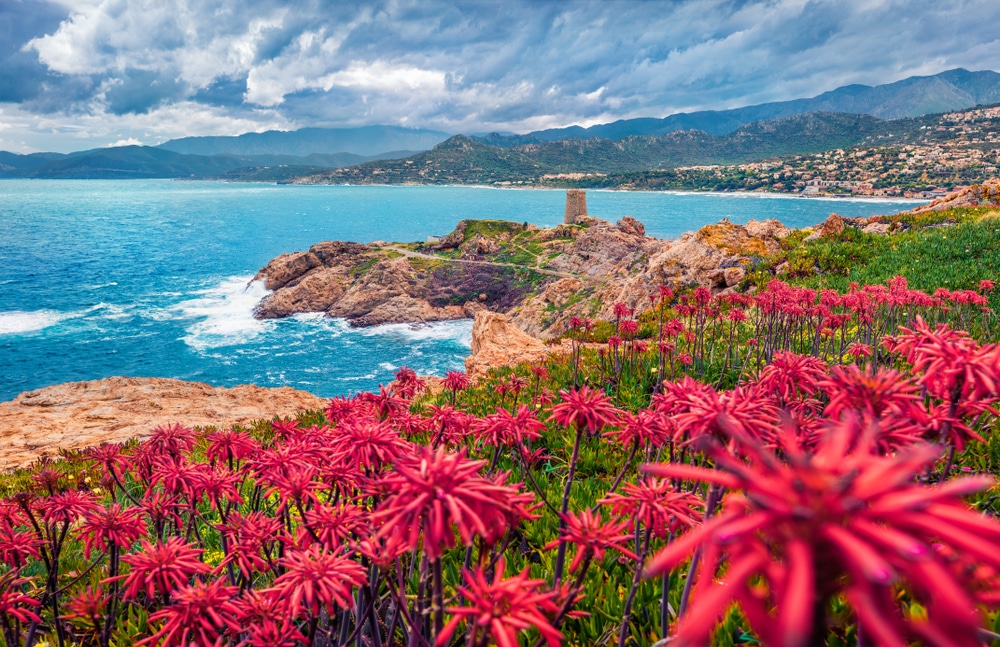
The island of Corsica, which belongs to France , has a lot of different facets to offer. The Italian influence on the 8,680 square kilometre island, which once belonged to the Italian Republic of Genoa, is still noticeable: be it culinary, architectural or linguistic. Even today, many of the 340,000 Corsicans speak Italian in addition to French. The fourth largest island in the Mediterranean enchants its visitors with beautiful sandy beaches in front of a turquoise blue sea, rugged mountain worlds that rise between vegetation-rich forests, and medieval towns, full of culture and historical buildings, as well as picturesque fishing and mountain villages. This is the right place for those who love variety.
The pearl in the south of the island: Bonifacio
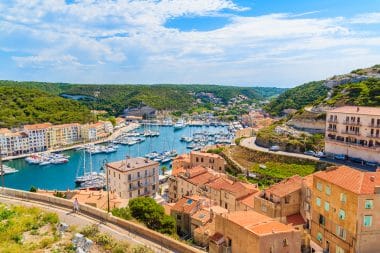
The small port town of Bonifacio is located in the very south of Corsica, and is separated from the Italian island of Sardinia by a strait only twelve kilometers. The approximately 3,200 inhabitants of the city can look back on a long history. Bonifacio was founded in 828 AD by a Tuscan count. Since 1768, the city, located on a peninsula-like rocky plateau, has been French. If you approach the old town from the water, you have a fabulous view of the washed out rocks of the plateau on which the city’s houses are enthroned.
The old town streets are narrow, shady and full of cobblestones. From the ends of the alleys there is often a wonderful panorama over the Mediterranean Sea. The “Cimetière marin de Saint-François”, located in the west of the city, is idyllically located in the courtyard of a monastery. The artistically designed tombstones and mausoleums are worth seeing. From the historic harbour, you can take a guided boat trip to the surrounding grottoes.
You can also see the so-called “Staircase of the King of Aragon“. These are 187 steps carved into the limestone rocks that lead from the upper town down to the sea. If you prefer to walk, you can take a five-kilometer hike along the cliffs to Capo Pertusato, the southernmost point of the island. On the 99-metre-high cliff of Capo Pertusato rises a lighthouse that can be seen 46 kilometres away at night. From the lighthouse, a footpath leads directly down to the beach.
The birthplace of Napoleon Bonaparte: the island’s capital Ajaccio
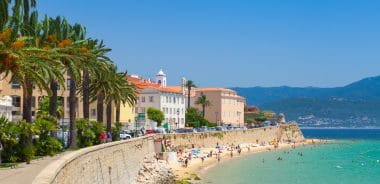
Today, almost 71,000 Corsicans live in the city where Napoleon was born in 1769. The old town, which was laid out by the Genoese, pulsates. There are rows and rows of restaurants, bars and cafés, boutiques and souvenir shops. Of course, there is an opulent monument to the city’s most famous son, Napoleon Bonaparte, on Place Charles de Gaulle. If you want to immerse yourself in the daily life of the Corsicans, visit the green markets of Ajaccio. Producers from the surrounding area offer fruit and vegetables, olive oil, homemade cheese, coppa and lonzu – smoked pork ham – or figatellu, a liver sausage mixed with herbs. On a walk through the old town, you stroll past Napoleon’s birthplace and a whole series of churches worth seeing.
Surrounded by mountains: the port city of Calvi
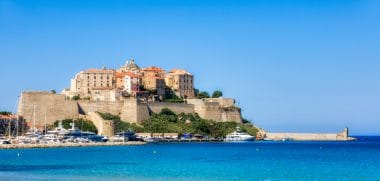
In the north of the island lies the fifth largest municipality in Corsica with around 5,700 inhabitants. Idyllic, in the bay of Calvi, lies an extensive sandy beach, which is one of the most beautiful on the island. There are numerous beach bars and restaurants along a length of five kilometres. You should definitely try the fresh seafood here, as it is considered a speciality of the city. In addition, Calvi beach offers all kinds of water sports: from surfing to diving, snorkelling and kiting.
From there you also have a very special view of Corsica’s mountains from behind. The best way to approach the city after swimming is via the harbour promenade, and look at the citadel from the 15th century, which is now often used as a venue for festivals or concerts. The alleys of the old town are narrow, and stretch up the hill past the Saint Jean Baptiste Cathedral. The destination is the 19th-century chapel of Notre-Dame de la Serra, which is the highest point of the city high up on the Tafoni rock. Especially in the evening hours, you have a beautiful view over the Gulf of Calvi from here.
Hiking through the beautiful nature of Corsica
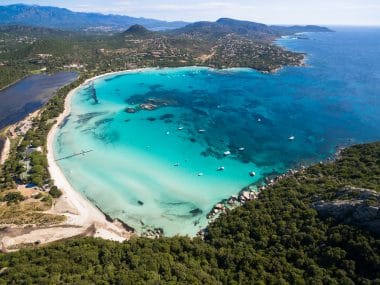
If you are drawn to nature, the highest mountain in Corsica at 2,706 meters is recommended: Monte Cinto. It is centrally located in the high mountains of the Cinto massif, and can be reached via the GR 20 long-distance hiking trail, which stretches over 170 kilometers across the island. The GR 20 is considered very demanding, but it compensates for all efforts with numerous magnificent views over the sea. In addition, the GR 20 leads through great natural landscapes, past several mountain lakes, through dense forests and past rugged rock formations.
On the way, it is possible to get on and off the GR 20 at several points. If you want to walk the GR 20 completely, it will take about 15 days. The starting point is the town of Calenzana, where the Corsica Regional Nature Park is also located. If you don’t want to hike quite so high, you will find shorter and easier hiking routes here in the nature park. They are nestled between thyme, myrtle, lavender, and juniper. In addition, 800 species of animals can be encountered, for example golden eagles, cormorants or mouflons.
Können wir Ihnen helfen?
Benötigen Sie Unterstützung bei Ihrer Reiseplanung oder weitergehende Informationen zu einzelnen Reisezielen? Wir freuen uns über Ihre Kontaktaufnahme.

